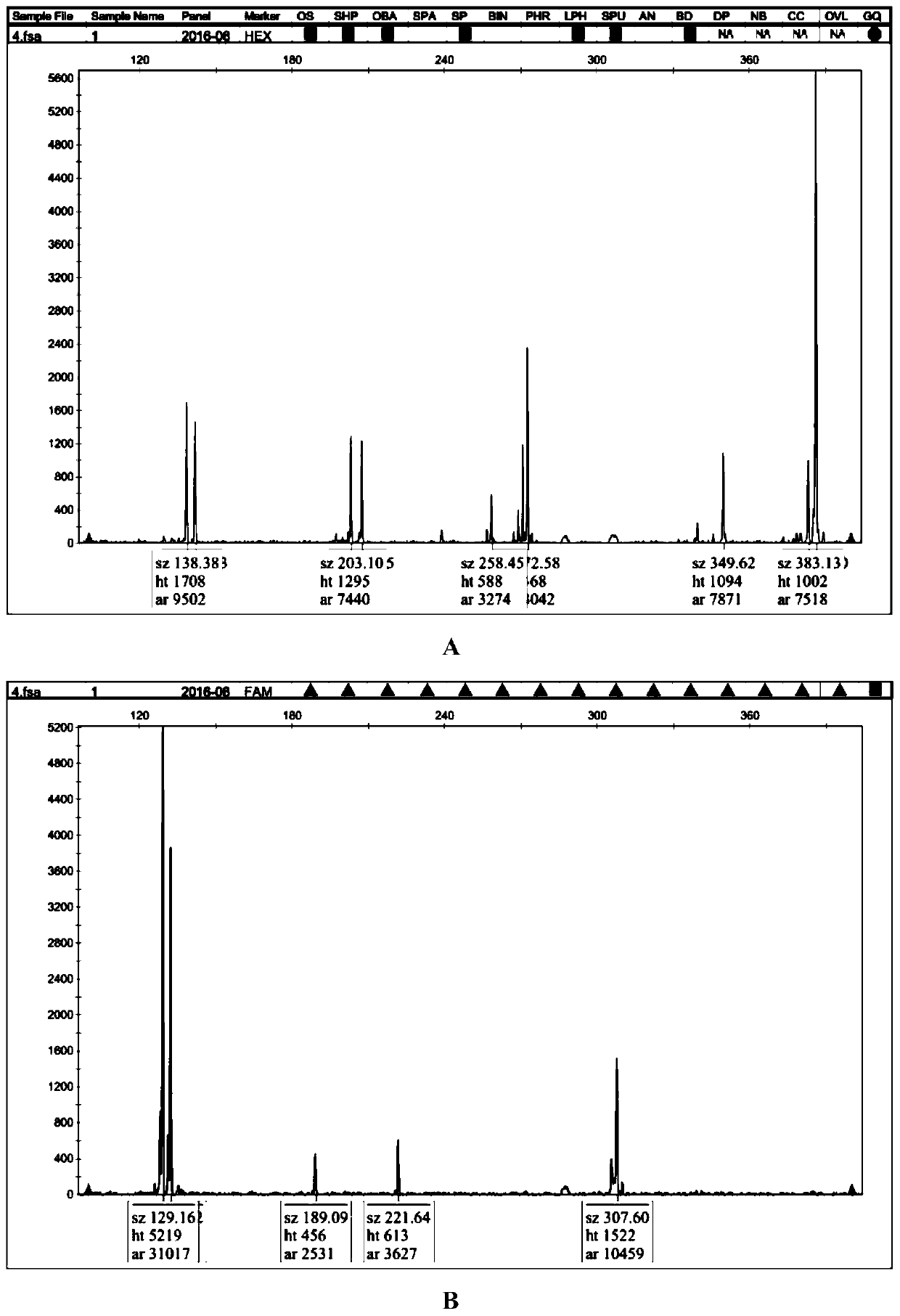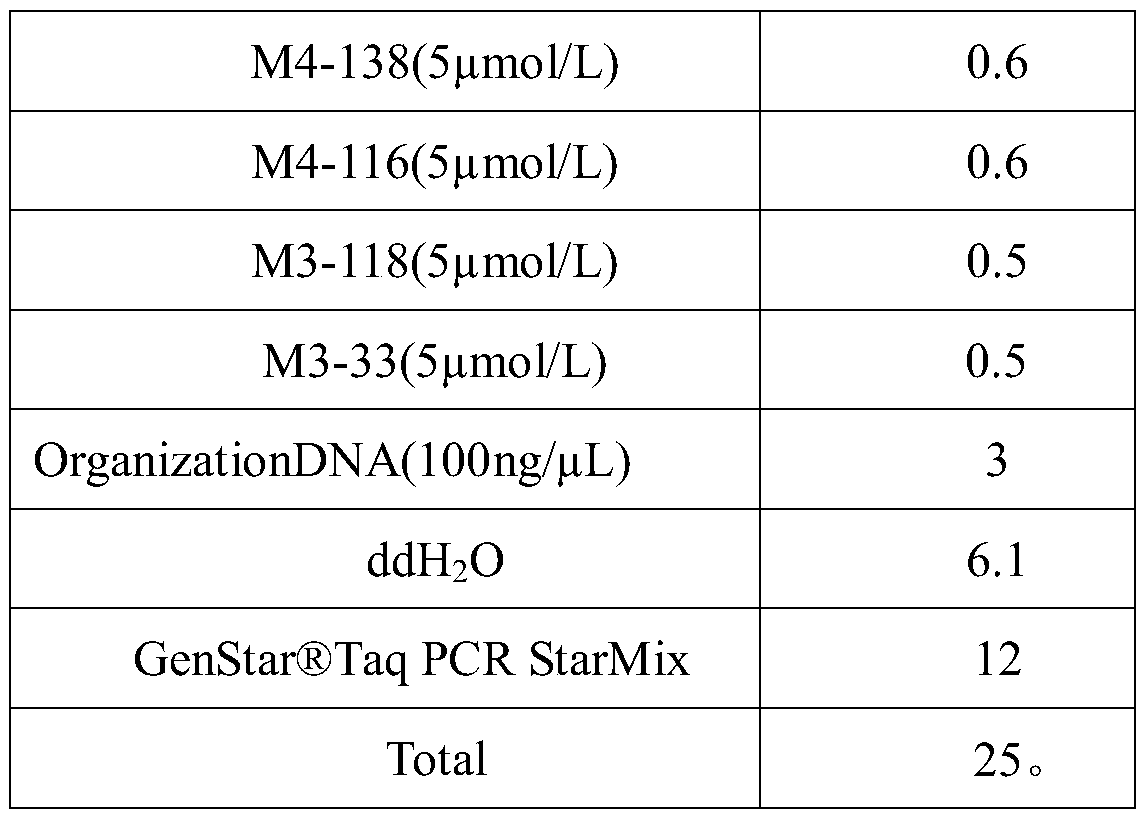A method of microsatellite fluorescence multiplex PCR for parentage identification of grouper oblique
An oblique grouper, parent-child identification technology, applied in biochemical equipment and methods, microbial determination/inspection, etc., can solve the problems of inability to mark larvae, influence on the survival of larvae, etc., to improve efficiency, improve accuracy, and interpret accurate effect
- Summary
- Abstract
- Description
- Claims
- Application Information
AI Technical Summary
Problems solved by technology
Method used
Image
Examples
Embodiment Construction
[0043] The specific embodiment of the present invention will be further described below in conjunction with examples.
[0044] The method for the microsatellite fluorescent multiplex PCR of the clotted grouper paternity test provided by the present embodiment comprises the following steps:
[0045] (1) Extraction of DNA from the grouper
[0046] Cut off the individual fin rays of the male parent, female parent and 30 offspring of the oblique grouper family and immediately store them in 95% ethanol. The male parent is marked as C, the female parent is marked as X, and the 30 offspring are marked as 1-30 , Genomic DNA was extracted using the phenol-chloroform method:
[0047] Use tweezers to remove the caudal fin preserved in alcohol, cut about 20 mg, gently press with filter paper to absorb excess alcohol, transfer to a 1.5 mL centrifuge tube pre-added with 580 μL tissue lysate and cut the tissue into pieces. Then add 20 μL of 20 mg / mL proteinase K, shake gently to mix, and pla...
PUM
 Login to View More
Login to View More Abstract
Description
Claims
Application Information
 Login to View More
Login to View More - R&D
- Intellectual Property
- Life Sciences
- Materials
- Tech Scout
- Unparalleled Data Quality
- Higher Quality Content
- 60% Fewer Hallucinations
Browse by: Latest US Patents, China's latest patents, Technical Efficacy Thesaurus, Application Domain, Technology Topic, Popular Technical Reports.
© 2025 PatSnap. All rights reserved.Legal|Privacy policy|Modern Slavery Act Transparency Statement|Sitemap|About US| Contact US: help@patsnap.com



